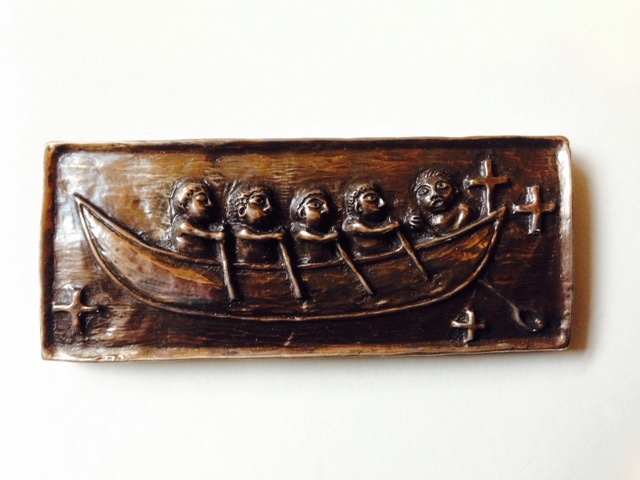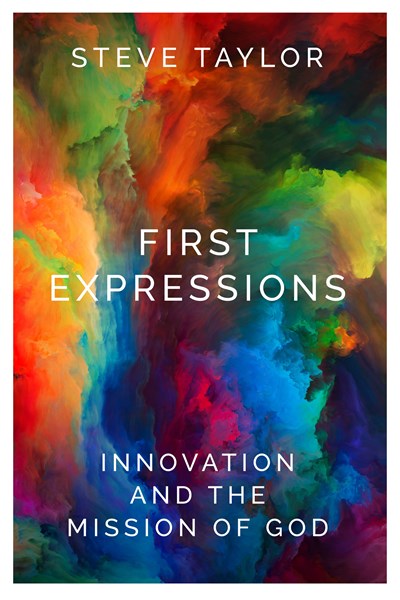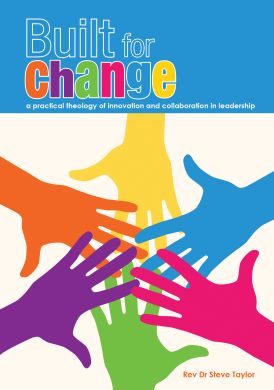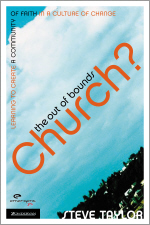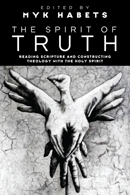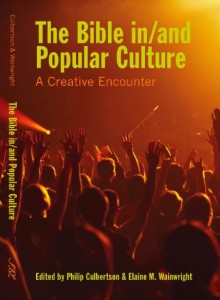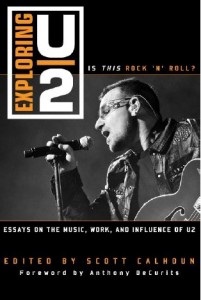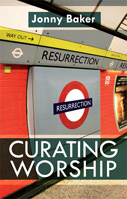Tuesday, May 29, 2012
Does the Trinity and Rublevs Icon prioritise worship over mission?
![]() Does Rublev’s Icon encourage a church gathered in worship, rather than a church scattered in mission?
Does Rublev’s Icon encourage a church gathered in worship, rather than a church scattered in mission?
Such is my question as I prepare to speak on mission, including leading worship, amongst leaders of the Uniting churches of the South East on Saturday. It is the only speaking engagement I’m doing in the 3 months of sabbatical. I had said yes before the sabbatical option came up, so I felt it was a commitment I had to honour.
In preparation, I’m aware that the Sunday coming is Trinity Sunday. So the obvious place to go is to Trinity and mission. Here’s what I wrote in 2004.
At the heart of the Trinity is three persons – Father, Son and Spirit – in the giving of love. Love is shared between persons, in an unlimited, ever-spiraling flow of love. The church fathers used to call this perichoresis – the divine dance of love. It is a beautiful metaphor; fluid, whole-bodied, dynamic.
What makes this missional is that this dynamic, fluid, flowing love is shared with the world, in creation, in Christ, and in the activity of the Spirit. This flow of love refuses to remain self-centred.
When God breathes breath into humanity, created in the image of God, we see the relational love of the Trinity shared. Love is never self-indulgent. In Christ, the relational love of the Trinity is shared. The sharing is so radical, so complete, so life-giving, that one person of the Trinity will die for the Other. The affirmation that the Spirit is in our world reminds us that love is always calling us, always inviting us out of our circles, out of our understandings of community, out of our walls and set practices. In this sense the Trinity is missional,
Further, the Trinity offers us unity and diversity, one love shared between three distinct persons. This also guides our mission. The missional church will be an expression of the shared love of God. Equally the missional church will be locally distinctive, a unique, grounded expression of the God-head.
Thus talk about church and mission needs to be grounded in our understandings of God as Trinity. A “missional church” is not new, but a recovering of very ancient understandings, in which we live, we create, we emerge, as an outflow of the shared love of God. We seek to express fluid, whole-boided, dynamic love. We honour the unity with other expressions of church, we applaud diversity, we celebrate uniquely grounded differences.
I’m still happy with that, some 7 years on. But how to express such concepts – intellectual and theological in worship?
One option could be to invite them to draw in the beautiful sandy beaches around Robe, like here. Another could be to adapt the Rublevs Icon children’s talk, which I did with such positive feedback when I preached last year at Brighton Uniting on Trinity Sunday.
But it raises the question with which I began: Won’t contemplation of the icon simply leave me sitting at the table with Jesus? Doesn’t it encourage a church gathered in worship, rather than a church scattered in mission?
Sunday, May 27, 2012
when the day of Pentecost came: the visual in worship
When the day of Pentecost came. Mark A Hewitt, Pastel & pen. 26 May 2012. (Mark provides a weekly visual for worship here).
Wednesday, May 02, 2012
Visual in worship: weekly lectionary visuals
Mark Hewitt is a trained artist and a Uniting Church minister. As an artist, he’s deeply aware of the power of visual images. Tired of spending time each week looking for images for worship, he’s decided instead to stop browsing the internet and instead use the time saved to create an image himself. His goal, each week is to present that week’s lectionary text, visually.
Often creativity works when it becomes confined. Somehow the constraint – of resources, of time, of circumstances – results in innovation. Mark is letting the constraint of time – only having a few hours, and of the weekly lectionary text – be his seedbed for imagination.
Since the creativity is emerging from his church life, and the lectionary only rolls around once every 3 years, he wanted to make his work more widely available. He’s created a website, – Old Tractor Tin Shed – where he is posting his visuals in worship. It is on a Creative Commons copyright:
Mark A Hewitt of Panorama South Australia is the Artist and copyright holder of all visual art and photography on this site.
You are free to use these works for non commercial purposes
on the condition that Mark A Hewitt is made reference to as the artist.
Friday, April 27, 2012
sacraments, mission and a really open table
When nothing is holy, everything is holy.
This is what struck me reading this wonderful, thoughtful post by Sally Coleman.
I am suggesting that there are occassions [sic] and contexts where we are able to share the story of God in the world, from creation to re-creation, the incarnation, ministry, crucifixion and resurrection of Christ, and we need to give people the opportunity to respond…
Imagine setting out to tell the story of God at a town festival, a music festival or something of that kind, tell the story in an imaginative and creative way, and people gather to listen. How then do we invite them to respond? They could come forward and recieve a tract, and prayer, and maybe those things are good, or we could break bread together…
She deploys Scripture
- the feeding of the 5000 (She’s right – the exact same verbs – took, gave thanks, broke) used by Jesus as at the Last supper.
- she also reflects on Pentecost (but does overlook the fact that there is no sacraments used at that point. Further than those who heard were devout Jews and thus came from around the Mediterranean with a huge amount of worldview already formed).
- and on the woman at the Well (although again overlooks the fact that there are no sacraments at that point eitther).
She uses missiology
- bounded sets and centred sets, the work of Paul Hiebert, to explore what a centred set understanding of sacraments would look like (there’s a few post-graduate theses in that question)
She reflects on tradition
- the very words and patterns used at communion (She’s right – the words are often so deeply theological that they do require knowledge of the story to unpick the invitation)
- but she might also want to turn to the pattern of the early church, who delayed communion, placed it on Easter Sunday, after a year long process of formation and understanding.
She uses reason
- the way that sacraments are “a tangible, physical way for people to meet with and respond to what the Spirit” and extends this forward into initial encounters with the Spirit.
To conclude:
So what am I saying about the sacraments? I believe that they open a door of powerful encounter with God, and that they can be used missionally, indeed that they are in some way; for if it is the Holy Spirit who brings them to life
It’s a wonderful, thoughtful, probing post. It needs a response, not from the church, but from the culture. Sometimes, might those outside the church want to ponder precious things, to save the moment until their understanding might enable a richer feast. But it’s exactly the type of questions needing asking in our post-Christian context.
Thanks Sally. Just the type of resource to use in my next Church, Ministry, Sacraments class!
Updated: And Sally has blogged a 2nd time, with some more reflection.
Wednesday, April 25, 2012
stations of the rainforest as spirituality for tree huggers
Really interesting video, linking environmental themes with Stations of the Cross. The 14 Stations of the cross are woven around the death of rainforest. Interesting that they have included a 15th Station (yes Clifford and Johnson, indeed the Cross is not enough!) which looks out how we can live sustainably, environmentally, in lifegiving ways.
It comes from the Columban Missionaries of Britian, and has an accompanying written resource. (I’d place this alongside my experience of 7 words, 7 sites: an indigenous Tenebrae Service from earlier this year.)
Of course, it’s a video. Which leaves me pondering what an embodied Stations of the Forest would look like – actual nature based walks around Adelaide.
It also links for me with some of what I was exploring last year – outdoor stations as fresh expressions and how God’s second book, the book of creation, might be a regular part of Christian expression. Especially in climates as conducive to being outdoors as Australian ones. Especially if followed by hospitality and community afterward.
Wednesday, April 18, 2012
icons as spiritual practise
Last year, as a thank you gift for their ministry here in Adelaide, I gave John and Olive Drane an icon I had “written.” They now want to use it as a resource, both in worship and in a class they are running on worship later this year. So they asked if I might shoot a “homemade” video, reflecting on the spirituality of icons.
I thought I’d also place it on the blog, in case any of my readers are interested – why do I “write” icons? what is a “pioneer” icon? how do icon’s work as theology and for spirituality? how to craft an icon?
A short personal reflection on the icon as spiritual practise.
Two most helpful books in getting me started as an icon “writer”:
And for those who can’t access the video, here are my notes in preparation to speak (more…)
Tuesday, April 17, 2012
urban theologies with visual power
Two wonderful contemporary urban theologies emerging from UK cities at the moment. I love the way in both these projects urban space is being mapped, the way the visual sparks possibilities, the fusion of prayer with concrete realities.
Lou Davis
pioneering in Edinburgh
mission crafter
lino cuts, sound track: City of Stone
for prayer
Ric Stott
minister to Sheffield
mission as artist
curating Soul of Sheffield
Sunday, April 08, 2012
resourcing resurrection
What a great line – “you didn’t see that coming, did you?” Superb capturing of the surprise for the Gospel witnesses.
The full text, all 605 words is here, along with link to a discussion guide.
 My resurrection spiritual practices this year include shuffling the Jesus Deck from Mark to John (it has just been re-printed, available from “resources at chelmsford dot anglican dot org”), planting my front yard full of native plants and sinking my teeth into some Australian missiology – Cross Is Not Enough: Living as Witnesses to the Resurrection
My resurrection spiritual practices this year include shuffling the Jesus Deck from Mark to John (it has just been re-printed, available from “resources at chelmsford dot anglican dot org”), planting my front yard full of native plants and sinking my teeth into some Australian missiology – Cross Is Not Enough: Living as Witnesses to the Resurrection
Thursday, April 05, 2012
Seven Sites, Seven Words: indigenous Tennebrae Easter service
We had the privilege yesterday evening of being part of Seven Sites, Seven Words, an indigenous Tenebrae Easter Service.
The service was located at Pilgrim Uniting and involved a journey outside, around the central city. Scripture passages that tell of events leading to the death of Christ were laid alongside readings of parallel stories of white engagement with Australia’s Aboriginal people, of betrayal, denial and death. Symbolic gestures – the coins of betrayal, the whip, moments of white denial – found fresh meaning.
The service has been developed by Geoff Boyce, adapting from Norm Habel’s ‘Healing Rites at Seven Sites.’ It was a wonderful reframing of the tradition of Tenebrae (Latin for ‘shadows’ or ‘darkness’), capturing the darkness of the events leading to Easter Friday and the pain of colonisation.
The sites were skillfully chosen, ensuring that Easter is not hidden in a church, but public for bystanders to see – as it was in the original. Theologically, the process of identifying Christ with indigenous suffering is an appropriately disturbing, destabilising act. The movement and the invitation to participation added to the personal engagement.
Seven Sites, Seven Words is an event that needs to be experienced by all Anglo-Australians.
Tuesday, April 03, 2012
Easter scattered: a resource
Folk looking for Easter resources on this blog (there are quite a few of you, judging by the current search queries folk are using to get here) might find this helpful …

It is a holiday pack, in which we offered an Easter service that folk could do as groups/families if they went away for the weekend. It emerged out the tension between church gathered and scattered (for more on some theological framing of this see here and here).
How to put energy into Easter, without sending the “come-to-us” signal? The result was designing a service that could be done both gathered and scattered. This took quite a bit of creative thinking, but once done it allowed us to say: if you’re going away for the weekend, grab an Easter holiday pack. If you’re staying around for the weekend, join the services. The Sunday after Easter becomes a bit of a show and tell, as whether we were staying or going, we can reflect with each other on what Easter meant. For more go here. For the actual “scattered” service (more…)
Saturday, March 31, 2012
palm sunday worship as mission – with more time
Creationary: a space to be creative with the lectionary (in this case, visual images on themes of pilgrimage). For more resources go here.
I posted earlier this week some Palm Sunday resources, first some creative prayer stations and second some soundtrack ideas. They were in relation to the 20 minute chapel services we do as part of our prayer life at Uniting College.
If I had more time, both in preparation and in length of service, I would have added two further stations – indoor spirit signs and outdoor spirit signs.
Indoor spirit signs – this would involve some large street maps and some stickers, probably circles and in different colours. I would invite people to consider the city through Jesus eyes. I would invite folk to place the stickers on the map in places they consider spiritually significant. For examples, places that Jesus might weep over, temples that Jesus might want to overturn, annointing places where Jesus might unexpectedly be annointed with perfume. I would want to keep the maps and place them on the walls around the church/chapel, as places for ongoing reflection and prayer in the months ahead.
Outdoor spirit signs – this would involve giving people chalk (washes off in water) and invite them to walk their streets. As they walk, to draw signs on the pavement that might symbolise the entry of God into their neighbourhood. Perhaps tears, perhaps rainbows, perhaps broken perfume bottles. And perhaps to take pictures of these, to text back into the church, which could be added into a powerpoint.
If I had even more time, I would get people to make the symbols prior to walking, as stencils (see here and here).
The aim of both of these are an attempt to connect worship and mission, our neighbourhoods today with the activities of Jesus in Holy Week.
Wednesday, March 28, 2012
the J(esus)POD on Palm Sunday
So if Jesus were entering Jerusalem today, what songs would be on rotate on his ipod? (4 other Palm Sunday prayer stations are here).
Here are the contributions so far from the twitter-verse and facebook-verse.
- U2 – City of blinding lights, Yahweh, New York, Angel of Harlem, Elevation
- Jefferson Starship – We Built This City
- Diana Ross and the Supremes – Stop in the name of love
- Lou Reed – Walk on the wild side
- Elvis Costello – What’s So Funny About Peace, Love, & Understanding
- Laura Marling – All My Rage
- Arcade Fire – Abrahams Daughter
- Fleet Foxes – Helplessness Blues
- Ben Harper – Pictures of Jesus
Tuesday, March 27, 2012
creative palm sunday worship stations
Creationary: a space to be creative with the lectionary (in this case, visual images on themes of pilgrimage). For more resources go here.
Chapel in Palm Sunday week – an invitation to enter a week of activity
(Update: This resource was further developed here – the J(Pod) shuffle on Palm Sunday – and here – Palm Sunday as mission.)
Rad-Adalaide station
Take an Adelaide road map. Draw on the map the route of your most recent “entry into the city.” Draw your feelings as you drove/trained/bussed/biked? Mark with a cross where you thought you were most likely to find Jesus. Reflect on whether your expectations were met and if it matters?
iPOD station
So if Jesus were entering Jerusalem today, what songs would be on rotate on his ipod? List the top 5.
Make palm crosses
Instructions have been provided. As you fold pray for people you know, people who are being “creased” by life.
Colouring station
Colour in the icon. Simply enjoy it. As you do ask God to speak to you through the activity.
Walking on the pavement station
Take some time to wander outside. In this Palm Sunday week, please walk only on concrete footpaths. As you do, silently pray for people who have walked before, and who are walking behind you. What might it mean for you to encounter the Christ in them?
At 12.22, a bell will ring. We will gather, to share communion on the Tuesday/to share what we experienced on the Wednesday.
Sending prayer
Jesus, when you rode into Jerusalem
the people waved palms
with shouts of acclamation
Grant that when the shouting dies
we may still walk beside you even to a cross …
Thursday, March 15, 2012
creationary: Keith Haring’s Life of Christ and John 3:16
I’ve been sitting with Keith Haring’s Life of Christ all week, alongside the lectionary text for Sunday (John 3:16), reflecting on the questions that arise for me.
I’ve used it for chapel on Tuesday, as a call to worship (As we look at the figures, what posture best describes how we’re feeling? ). And on chapel on Wednesday as an aid to prayer (What prayer would I make in response to the “Life of Christ”? Who do I want to place in the painting, in the arms of the “Life of Christ”?)
Updated with photo: The Haring image projected. People were invited to prayer using written words rather than verbal words, by writing on post-it notes and sticking them to the screen on which was projected the Haring image. It was lovely to see people walking into the projection, finding themselves caught within the life of Christ.

And I might well conclude the two services I’m preaching at on Sunday with “What posture does the “Life of Christ” calling from me?”, along with the following video:
A creationary: a space to be creative with the lectionary. For more resources go here.
